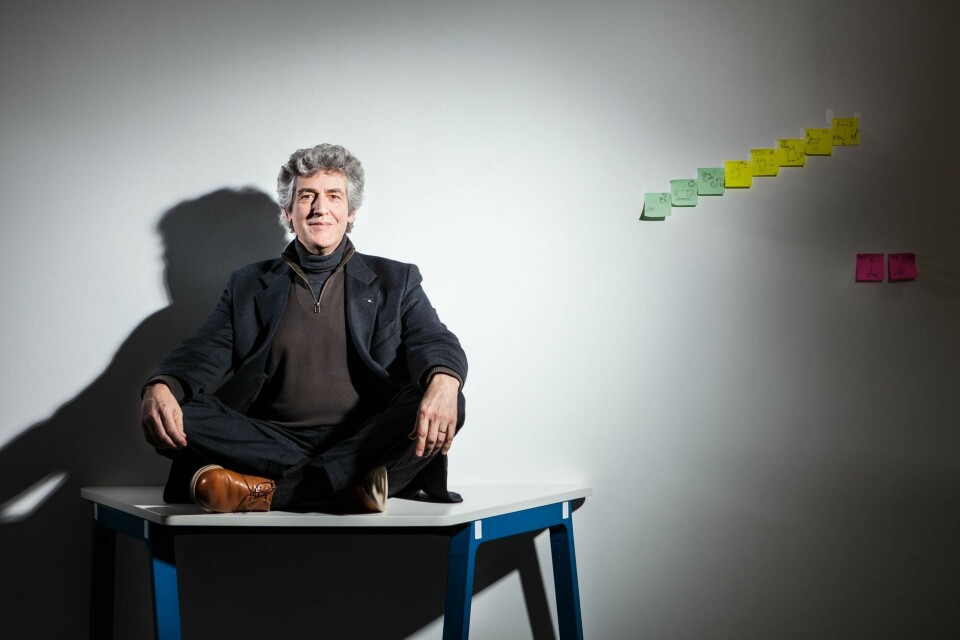
Car Design Review 4 highlights: Nicola Crea
Coventry University’s Nicola Crea takes a wide-ranging look at how the car will evolve and how to avoid superficial design
If you think about what human beings have done, the pyramids, the moon landings, none are as important as making cars.
This year has really been about the change of automotive culture to automobility. Increasingly, human-centred design is more and more relevant. We are transitioning from focusing on technical issues to more human-related issues and car design will play a major role in this process. The importance of automotive history will become more and more important over the years.
This huge amount of information needs to be organised and become a scientific discipline. This is more relevant than art history because art did not affect human society as much as cars did. Cars really transformed our species, fundamentally affecting how we live and our behaviour. To properly document what happened over this 100 years is very important.
Three hundred years from now when people turn on a Ferrari in a museum I cannot even imagine the effect it will have on people. Cars have affected city planning, building construction, and so on. All of humanity has been affected by cars and if we take cars off the streets tomorrow, half of the world’s economy will be affected. It is worth studying the massive impact of the motor car. There is so much information. So much to document. It is important to understand this broader impact of auto design objectively to understand what should happen in the future. I think we are perfectly placed to do that here at Coventry.
The 2016 [Mini] Vision Next 100 concept had a meaning because it was considering the future scenario and proposing a product that was worthwhile and specific and not simply idealised. We have seen other brands explore these ideas but without providing a solution, and it was worthwhile to see that. Many other manufacturers are continuing to do styling without a real purpose.
2016 seemed to be the year when much more of the car industry realised that if they didn’t move they would be left behind. This led to some genuine surprises. The Jaguar I-Pace concept was brilliant because it combined advanced electric technology with Jaguar’s heritage, sport and luxury in a small size, which is difficult. It’s much easier to design a big car than a small one. Most small cars look awful because it is very difficult to make a small car look nice. This is also why I loved the Suzuki Ignis. It is a tiny car but if you look at it, it looks big and powerful. This too is brilliant design work. Areas like the rear window incorporate clever design solutions which give the impression of a bigger car. There are some very fine design qualities that give the car real presence.
What I don’t appreciate is that many design studios are just doing things to make cars different, with little intellectual thinking behind this. This means there has been little substance behind many concepts in 2016. A car, to be successful today, needs to go much further. I no longer believe in beautiful sculptures for their own sake. Cars will need to have a much greater purpose, in terms of fulfilling specific needs – purpose and function.

Work from Coventry student Tom Strong
As teachers we aren’t supposed to judge student work in terms of being right and wrong, because we are going through our own filter. The only way to judge student work is to confirm that the parameters a student was trying to meet have been met at the end, not to make personal judgements. We need to find the logic behind the design process. This is a delicate balance. A design school is not a design studio. We are not responsible for their work — we are not design chiefs — yet you need to help the students create work that is believable.
I asked myself similar questions looking back at 2016. The Jaguar I-Pace, Mini Vision Next 100 concept and Suzuki Ignis were great examples of how to make a mature automotive product. There was nothing superficial about them. So much car design is superficial. In these three cars I really found some purpose.
I think the car industry will be replaced by other industries which will provide mobility. This is beginning to happen. The combination of computing technology and automotive technology will make a new generation of vehicles which will provide automobility. The culture of automobiles and the world of automotive design will split into two parts. The activities inside autonomous cars will be so different when no-one needs to drive.
Today, 30 percent of cars are used for work – yet none of them have been designed for work. The car is a disaster as an office. Why is the car industry not producing ‘office cars’? There’s nowhere even to place a laptop in the front! This is a fundamental change. The interior will be hugely redesigned, and is an unknown territory at the moment. So much more needs to be done, though slowly we are moving in this direction.
The advanced design studios should undertake a greater research role to create new ways of proposing cars and relating humans with the product. I haven’t seen much of this. I think psychologists ought to be more involved in the design process.”
Car Design Review 4 contains the best concept and production cars of the year, as chosen by the world’s leading designers, trends, student work, and much more.





